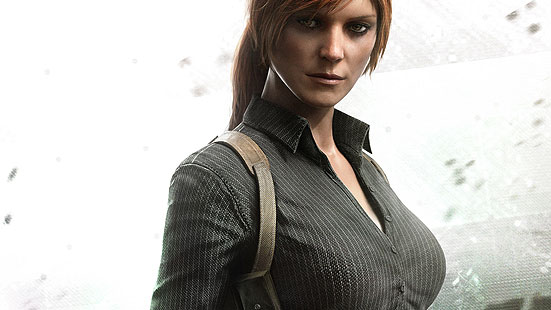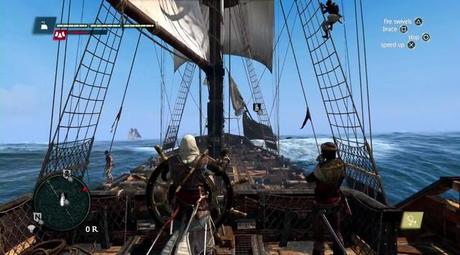The game focuses on fighting enemies using a sword and multiple subweapons to perform combos and counterattacks. Through the use of Blade Mode, Raiden can dismember cyborgs in slow motion and steal parts stored in their bodies. The series' stealth elements are also optional to reduce combat. The game was originally announced in 2009 under the title of Metal Gear Solid: Rising, and was intended to act as an interquel between the events of Metal Gear Solid 2: Sons of Liberty and Metal Gear Solid 4: Guns of the Patriots. This form of the game was to be produced solely by Kojima Productions. However, the team met with difficulties in developing a game based on swordplay, so executive producer Hideo Kojima canceled it. A solution was found, in late 2011, with Platinum Games taking over development. Under the guidance of the new team, Metal Gear Rising: Revengeance was revealed, with a significant change in the play mechanics and storyline. Kojima Productions retained responsibility for the game's overall plot and Raiden's design.
This new PC version includes all three DLC missions: Blade Wolf, Jetstream, and VR Missions, in addition to all customized body upgrades for Raiden, including: White Armor, Inferno Armor, Commando Armor, Raiden’s MGS4 body, and the ever-popular Cyborg Ninja.
"CUTSCENES" option added to the Main Menu. Play any and all cutscenes.
"CODECS" option added to the Main Menu. Play all and any codec conversation scenes.
Menu option added to the CHAPTER Menu enabling user to play only the Boss battles.
"GRAPHIC OPTIONS" added to the OPTIONS Menu. Modify resolution, anti-aliasing, etc.
There is an option reading "ZANGEKI" that will modify the amount of cuts you can make.
System Requirements
Minimum:
OS: XP or Vista or 7 or 8Processor: Intel Core i5 2400
Memory: 2 GB RAM
Graphics: Nvidia Geforce GTS 450
DirectX: Version 9.0c
Hard Drive: 25 GB available space
Sound Card: DirectX compatible sound card
Recommended:
OS: XP or Vista or 7 or 8Processor: Intel Core i7 3770
Memory: 4 GB RAM
Graphics: Nvidia Geforce GTX 650
DirectX: Version 9.0c
Hard Drive: 25 GB available space
Sound Card: DirectX compatible sound card
Game Play
Raiden can make use of a variety of sub-weapons or items. These are included, but not limited to, Rocket Launchers, various grenade types including stun grenades and disguise items such as the cardboard box. These items are designed to be an aid to Raiden in certain situations. Clever use of these items is crucial to your success however.The game's cutting system allows players to engage in melee combat, as well as to precisely slash enemies and objects at will along a geometrical plane using the "free slicing" Blade Mode. Virtually any object in the game can be cut, including vehicles and enemies, though elements of the environment were intentionally limited to structures such as pillars and walls to better facilitate the game. Entering Blade Mode produces a special targeting reticule in the form of a transparent blue plane which can be rotated and moved, tracing orange lines across the surfaces of objects to indicate exactly where they will be cut; it can also be used to enter a bullet time state, giving players the opportunity to precisely slash targets during moments of action, such as slicing through a falling target from multiple angles before it hits the ground. These features can be employed strategically, for example disabling opponents, finding weak points and gaps in armor, severing support columns to collapse ceilings or walls onto enemies, deflecting enemy fire, or cutting through objects to remove enemy cover. However, entering into Blade Mode reduces Raiden's energy to the point that if dropped to a certain level, it cannot be used. Across the story the player obtains the Ripper Mode, a state which enhances Raiden's power for a limited time facilitating the use of Blade Mode.
Raiden has the ability to parry attacks even when his back is turned, allowing him to counterattack enemies and perform multiple combos. The player also has access to a stealth mode called "Ninja Dash" which drastically increases Raiden's speed and allows him to climb certain areas. This allows him to strategically ambush an enemy rather than fighting head to head. Another key feature is called Zandatsu , and involves "cutting" through enemies and "taking" parts, energy, ammunition, items, and information from the bodies of dismembered cyborgs and robots. This maneuver can be employed when attacking an enemy during Blade Mode and helps Raiden gain energy. When completing a mission, the player will be rewarded with a specific amount of points depending on his or her performance and will receive a grade, with the highest being "S". These points allow them to buy upgrades for Raiden's equipment.
The player can carry out reconnaissance using a visor. Through this, the player can verify the areas and proceed to the objective avoiding contact with enemies. Hiding in a cardboard box makes sneaking easier for Raiden. Being spotted by an enemy triggers the "Alert Mode", in which Raiden is assaulted by multiple enemies for a determined time.The player also gains assistance from Bladewolf, a dog-like machine that gathers map information for Raiden.




















Fazi Templates
Follow Us
Blogger News